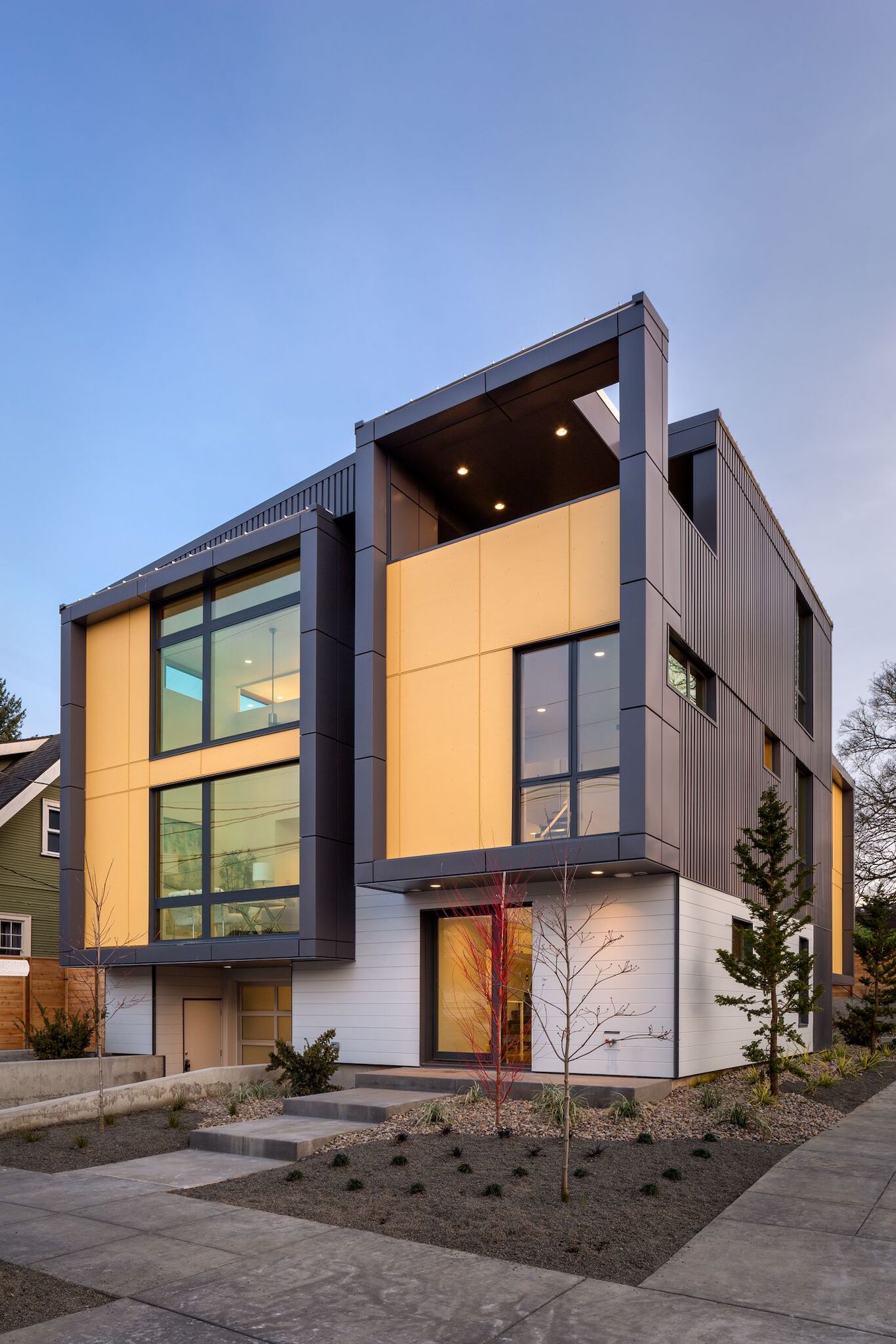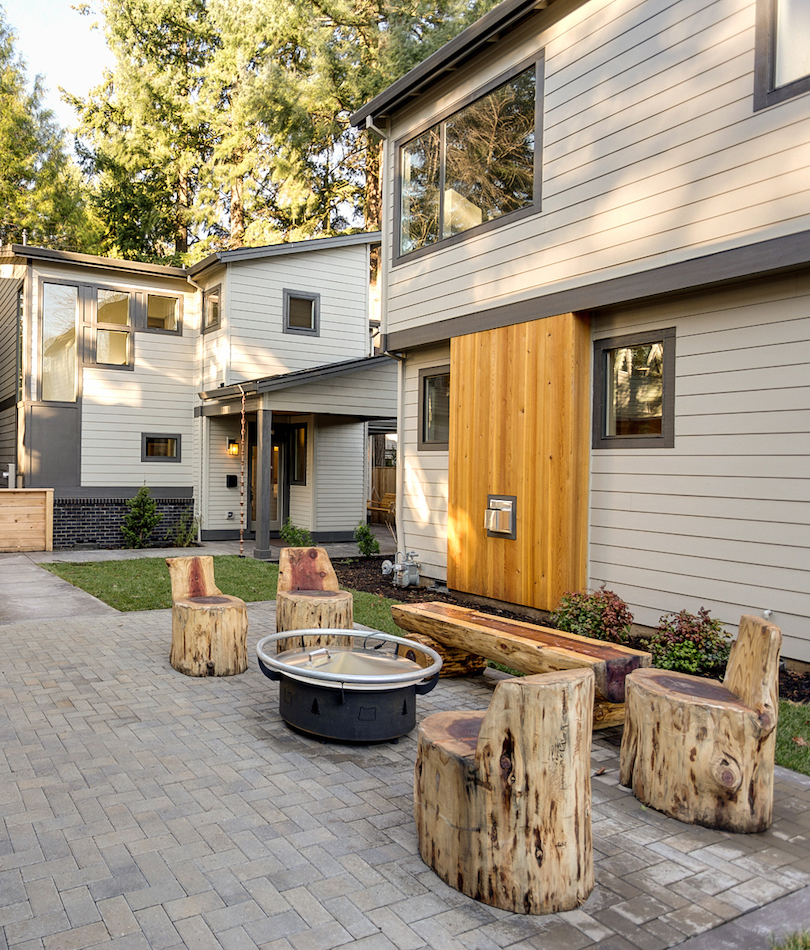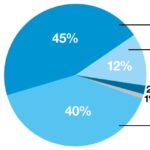Brand Story – Home Builders Association members want to build homes for average Oregonians, but high regulatory fees and policies get in the way.
Members of the Home Builders Association (HBA) of Metropolitan Portland and proponents of housing affordability share a common vision and ultimately the same fate, one to be determined by government policy.
While its members — developers, builders, remodelers and industry professionals — want to build homes accessible to all Oregonian families, a framework of fees and policies disincentivizes or prohibits them from building for the whole socioeconomic spectrum.
The HBA practices active government advocacy to remove the barriers preventing its members from pursuing projects that could directly improve a housing market under stress.
“We don’t represent international or large investment companies. We represent people who build housing that the majority of Oregonians live in,” says Ezra Hammer, director of policy and government relations for the Home Builders Association of Metropolitan Portland. “It doesn’t help our members, or Oregonians, when they are forced to build only the most expensive types of housing.”
A complete picture of the region’s housing reveals an interlinked web of factors, but policy sits at the head of the domino line. Hammer leads HBA’s government affairs team, dedicated to engaging in advocacy, education, coalition building and lobbying at the local level to advance a pro-housing agenda that supports an environment where affordable housing is the norm.
The regulatory costs dictate the type of housing that is built,” Hammer explains. “The system development charges, which are one bundle of costs, can be around $45,000. Then, let’s say you’re building in the city of Portland on a gravel road; the city could charge you $60,000 to construct sidewalks, curbs and gutters. Building permits alone can be another $20,000 to $30,000. Additionally, cities vary wildly in their capacity to review plans and issue permits in a timely manner. This uncertainty causes development timeline lags, which further increase housings costs.
When all is said and done, builders have no choice but to pursue correspondingly high rental or selling prices to recoup costs. In Portland, the 2019 system development charges rate for a single-family home is $33,912. In Tigard, that number totals $42,633.
Recognizing its negative effects, Tigard worked with the HBA to wave system development charges on accessory dwelling units for the next four years, making this housing accessible to a wider group of renters.
The association also advises a number of jurisdictions on regulations related to utility relocations, with the aim of removing the burden of building or relocating public infrastructure from the developer. By reducing the supplemental costs that come with construction, the HBA hopes to boost the momentum of a sustainable housing industry and Oregon’s overall wellbeing.
Misperceptions of “developers” paint a picture of internationally-funded mega firms taking over swathes of cities across the U.S. However the HBA’s members build modest projects – from accessory dwelling units to single-family homes to small-scale multifamily units – generally on their own dime.
Reframing notions of how communities should look
Government decisions around land use present another point of friction. Cities wary of rezoning to allow for greater density are equally averse to expanding urban growth boundaries, resulting in an overall lack of available land.
“Land use is inherently political. Oregon has some of the tightest land-use regulations in the entire country,” Hammer says. “I think it has a lot to do with outdated perceptions of what community should look like. There are plenty of examples of wonderful, livable, walkable communities throughout the world that are dense and well planned.”
The HBA proactively evaluates buildable land inventory reports published by cities, highlighting any discrepancies between the printed numbers and the land actually available to facilitate accurate policy decisions.
“We focus on issues with broad-based implications, and we push back against bad ideas and policies,” he notes. “For example, we believe that some minimum lot size requirements are outdated. Many cities say you need 5,000 sq. ft. to build one home. That’s not the case in other parts of the country.”
The organization and Oregon as a whole actively look outward for best practices implemented up and down the coast.
 Net-zero house in Northeast Portland built by Brian Schmidt Builder
Net-zero house in Northeast Portland built by Brian Schmidt Builder
Playing catch-up in a housing market that’s decades behind House Bill 2001 enables the spread of townhouses, duplexes, triplexes, 4-unit buildings and accessory dwelling units by loosening bygone Euclidean zoning rules in order to diversify neighborhoods.
The current state of housing stems from Oregon’s consistent underproduction over the past 18 years, says Hammer.
“Since the Great Recession, Oregon has produced 62 units of housing of all types for every 100 households being formed,” he says. “This has negative knock-on effects. Thirty-four percent of Oregon households are housing cost burdened” meaning they spend more than 30% of their income on housing.
That precarious paycheck-to-paycheck existence often ends badly, with Portland’s most vulnerable individuals finding themselves without a roof over their heads. A 2019 Eco NW report found that every 10% increase in housing costs correlates with a 13.5% increase in the number of people experiencing homelessness.
Even the most incremental shift can be the difference between a family sleeping in a one-bedroom apartment or a Walmart parking lot. As the HBA pushes for long-term solutions, it launched the Home Builders Foundation in 1997 to address the ever-growing number of people on the streets due solely to economic reasons.
Getting Portland’s most vulnerable off the streets today
“There are many more families on the streets now. I would say that’s the biggest change I’ve seen,” says Brenda Ketah, Executive Director of the Home Builders Foundation. “The number of kids who are homeless in Oregon is high, as is the number of foster kids. Beaverton has nearly 3,000 students who are homeless.”
From a shelter for girls escaping sex trafficking to sleeping pods for the Kenton Women’s Village to the Portland Homeless Family Solutions shelter expansion in Lents, the Foundation dials in on a specific segment of the homeless population.
“The Foundation tends to focus on the ones who are most vulnerable when on the streets, like women and families. We do a lot of projects with family shelters and domestic violence survivors,” Ketah adds. ”For women, within 72 hours of being homeless, there’s a 90% chance that they’ll be sexually assaulted.”
To date, the Foundation has built or improved more than 60 shelters valued at more than $11 million, both by organizing fundraisers and donating its own funding. Equally importantly, the Foundation connects nonprofits with builders and acts as a liaison as the two collaborate to realize projects. With the Foundation’s guidance, nonprofits complete projects more efficiently and at lower costs. The team recruits trade partners, and generally a HBA member, to lead the project as the builder captain.
Nonprofits attempting to build shelters face the same hurdles that the HBA seeks to eliminate.
“Working within the system, the biggest challenge is how long it takes to get permits,” Ketah says. “And nonprofit shelter providers run into the same fees as everyone else. It’s getting easier to get some waivers, but every county and city is different. It’s a daunting process and we need to expedite it to get people off the street.”
 Cluster housing project in Southeast built by Portland Houseworks
Cluster housing project in Southeast built by Portland Houseworks
Ending the cycle of homelessness
The Home Builders Foundation focuses on emergency and transitional housing for women, families, veterans and youth. However it has ambitions to fill all the gaps in the homelessness cycle, from preventing it in the first place to kickstarting careers through its existing pre-apprenticeship construction program.
Each year the Foundation awards tens of thousands of dollars in scholarships to students pursuing construction-related programs after high school. Since 1997 the Foundation has gifted more than $270,000 from its scholarship funds.
Ultimately, even if the Foundation and their nonprofit partners get a family back on its feet, employed and momentarily sheltered, a successful transition back to self-sufficiency relies on access to housing affordability.
“We see the lack of housing statewide as being directly linked to the homelessness crises and the ever-growing percentage of folks who are experiencing homelessness for economic reasons, as opposed to mental health or drug-related reasons,” Hammer concludes.
If Oregon cities continue moving in the right direction, the housing deficit could one day become a distant memory, forgotten by a future society where everyone lives in an affordable home of their own.
Events produced by Home Builders Association
The Home Builders Association of Metropolitan Portland organizes
large-scale consumer shows to unite and support industry professionals.
Portland Spring Home & Garden Show
February 20 – 23, 2020
Portland Expo Center
The largest home and garden show in the region, the Portland Spring Home & Garden Show features contractors, remodelers, showcase gardens and how-to seminars and demonstrations.
Tour of Remodeled Homes
March 14 & 15, 2020
Portland metro area
The Tour of Remodeled Homes is a scattered site tour throughout the Portland metro area that showcases large-scale remodeling projects. Attendees can see, first-hand, actual remodeling projects and meet with the remodelers.
NW Natural Street of Dreams®
Vendage at The Reserve in Hillsboro, Oregon
July 25 – August 23, 2020
Each summer, the NW Natural Street of Dreams, produced by the Home Builders Association, showcases several beautiful new homes with outstanding craftsmanship, design and innovations. The show also has three additional broader benefits. It provides an opportunity to highlight the latest in sustainable and energy efficient construction. It raises funds to support housing advocacy work as well as our Foundation’s transitional shelter projects. And it helps build public interest and awareness of new communities that will eventually feature a broad range of housing.
Portland Fall Home & Garden Show
October 9 – 11, 2020
Portland Expo Center
The Portland Fall Home & Garden show returns to the Portland Expo Center with great home products and ideas. Talk with experts, shop for the newest products and get inspired for your next home project.
Brand stories are paid content articles that allow Oregon Business advertisers to share news about their organizations and engage with readers on business and public policy issues. The stories are produced in house by the Oregon Business marketing department. For more information, contact associate publisher Courtney Kutzman.




